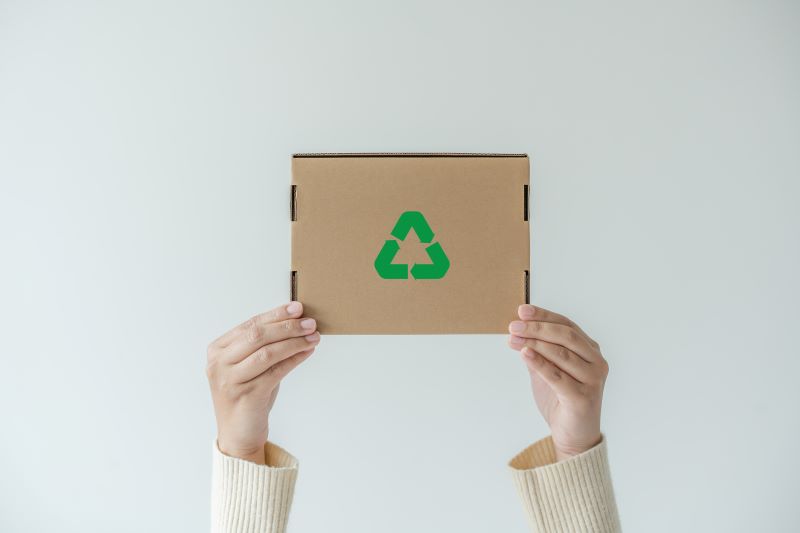According to research firm Deloitte, returns accounted for $761 billion in lost sales in 2021. BBC Earth reported that 5 billion pounds of landfill waste comes from returned products.
The lion’s share of returned products come from online shoppers. Insider Intelligence notes that while ecommerce accounts for only 15% of all retail sales in the U.S., those online sales rack up a third of total retail returns. The reasons for this vary:
- Most products sold online are in returnable categories, like clothing.
- Many online shoppers buy items in multiple sizes or colors with the intention of returning unwanted/wrong-size items.
- Some online retailers haven’t caught up with the need for detailed, accurate product descriptions to make up for shoppers’ inability to touch or try on items before purchase.
As a 3PL, you may not want to deal with returns because they can be complicated – especially if you’re working with larger or mostly online retailers. But reducing landfill waste and offering your customers ways to save money on returns makes you a stronger partner and more attractive vendor for new customers.
Here are a few ways to help your customers reduce their returns and save money on the orders that do come back.
Prevent returns before they happen
Of course, the best way to reduce waste and costs is to prevent returns in the first place. But with ecommerce constantly growing, that’s easier said than done. Still, advising your retail customers to take a few important steps makes a big impact. These steps include:
- Creating better product descriptions. Consumers can’t touch, try on or experience the product before buying, which encourages behaviors like ordering multiple styles or colors with the intention to send back whatever they don’t like. Thorough, accurate product descriptions put a customer’s mind at ease and reduce the likelihood of over-purchasing.
- Employing technology. One powerful example of this is apparel and accessory retailers using augmented reality to allow customers to “try on” an item before purchasing. Some stores have reduced their return rates by up to 36% using this technique.
- Using a customer service approach. Some retailers, particularly large online stores, have an automated returns process in which a customer generates a return label without ever talking to a customer service rep. But revamping this process can help reduce returns by encouraging customers to keep the item – perhaps in return for a store discount or store credit.
- Considering returnless refunds. Shipping lower-value items back to a warehouse and then processing them for disposal or resale often costs much more than it’s worth, and creates more emissions. Offering a refund without requiring the return may make more financial and environmental sense for these items – but of course, you’ll need to create a process to track whether some customers are taking advantage and requesting refunds fraudulently.

Use recycled/recyclable packaging and materials
In a 2021 Capterra survey, 43% of consumer respondents said they make judgments about a company’s sustainability based on their packaging. Forty-two percent judge by the materials used in the product itself. Even more compelling: 75 to 80% of consumers are willing to pay more for sustainable products.
But packaging remains one of the big contributors to waste from online shopping. Fragile products create even more waste thanks to their need for bubble wrap, plastic air cushions or other single-use padding.
Something as simple as switching to paper or recycled materials for padding can make a big impact – especially if you’re shipping a high volume of small, fragile products. You can also encourage your clients to offer longer return windows that allow consumers to combine multiple returns into one box, or offer buy online, return in store options that don’t require shipping materials at all.
Create a circular supply chain and turn resales into a profit center
In 2020, Nordstrom announced its See You Tomorrow program, in which it re-sold new or lightly used apparel and accessories returned to its stores. While the retailer eventually shuttered that program, it still maintains a donation program that allows customers to fill their newly-received order box with gently used items and either ship it back or drop it off at a Nordstrom store. This program allows consumers to save not only packaging waste, but apparel, accessories and other times that might otherwise have ended up in a landfill.
Other companies have taken advantage of the resale market, too. For example, Apple refurbishes open-box or lightly used electronics for resale at discounted prices. Creating an aftermarket for refurbished items keeps them out of landfills while offering consumers a lower price on those goods – a rare win-win situation.
Use the right software tools to optimize the returns process
Preventing returns, using sustainable packaging and creating a resale market for items that do come back to you are all great strategies – but you need an efficient way to process your returns. If you’re dealing with clients that maintain huge catalogs of disparate products, it’s even more crucial to employ the right technology to help maintain order.
The right solution will include dashboards for both you and your clients to see where returns are coming from, how to deal with them (back in stock, recycled, refurbished, etc.) and how you’ve dealt with them in the past. This helps you make intelligent, data-based decisions about where you can make the process more sustainable.
Need some help getting started? Octolan does all of that (and more) for you. Get in touch today to find out how we can help.